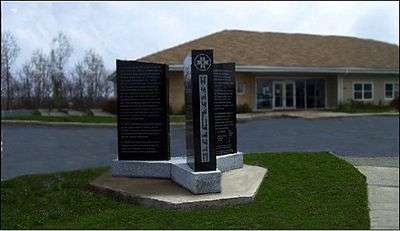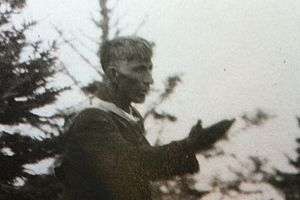Treaty Day (Nova Scotia)

Treaty Day is celebrated by Nova Scotians annually on October 1 in recognition of the Treaties signed between the British Empire and the Mi'kmaq people. The first treaty was signed in 1725 after Father Rale's War. The final treaties of 1760-61, marked the end of 75 years of regular warfare between the Mi'kmaq and the British (see the four French and Indian Wars as well as Father Rale's War and Father Le Loutre's War). The treaty making process of 1760-61, ended with the Burying the Hatchet ceremony (Nova Scotia) (1761).
The treaties were only formally recognized by the Supreme Court of Canada once they were enshrined in the Canadian Constitution in 1982. The first Treaty Day occurred in 1986, the year after the Supreme Court upheld the Peace Treaty of 1752 signed by Jean-Baptiste Cope and Governor Peregrine Hopson. Since that time there have been numerous judicial decisions that have upheld the other treaties in the Supreme Court, the most recognized being the Donald Marshall case.
The day October 1 was chosen because the Treaty of 1752 designated October 1 as the date on which the Mi’kmaw people would receive gifts from the Crown to “renew their friendship and submissions.” The purpose of Treaty Day is also to promote public awareness about the Mi’kmaw culture and heritage for all citizens of Nova Scotia.
History of Treaties

According to historian John G. Reid, the treaties of 1760-61, while they contain statements of Mi'kmaw submission to the British crown, what is known of the surrounding discussions, combined with the strong evidence of later Mi'kmaw statements, indicates that a friendly and reciprocal relationship was the real intent. The Mi'kmaw leaders who came initially to Halifax in 1760 had clear goals that centred on the making of peace, the establishment of a secure and well-regulated trade in commodities such as furs, and an ongoing friendship with the British crown. In return, they offered their own friendship and a tolerance of limited British settlement, although without any formal land surrender.[1] To fulfill the friendly and reciprocal intent of the treaties, further British settlement of land would need to be negotiated and, in exchange for accommodating the existing British settlements, presents would be given to the Mi'kmaq. (There was a long history of Europeans giving Mi'kmaq people presents to be accommodated on their land, starting with the first colonial contact.) The documents summarizing the peace agreements failed to establish specific territorial limits on the expansion of British settlements, but they assured the Mi’kmaq access to the natural resources that had long sustained them along the regions’ coasts and in the woods.[2]

The intent of the treaties began to erode with the arrival of the New England Planters and United Empire Loyalists. This migration into the region created significant economic, environmental and cultural pressures on the Mi'kmaq. As their military power waned in the beginning of the nineteenth century, the Mi'kmaq people made explicit appeals to the British to honour the reciprocal intent of the treaties and the duty of the British to give "presents" to the Mi'kmaq for occupying Mi'kma'ki. In response, the British offered charity or, the word most often used by government officials, "relief". And relief always came with strings attached: the Mi'kmaq must give up their way of life and begin to settle on farms and their children were to be sent for education to British schools.[3]

Gabriel Sylliboy was the first Mi'kmaq elected as Grand Chief (1919) and the first to fight for treaty recognition - specifically, the Treaty of 1752 - in the Supreme Court of Nova Scotia (1929).
The Treaties did not gain legal status until they were enshrined into the Canadian Constitution in 1982. R. v. Simon (1985) overruled R. v. Syliboy (1929)[4] which had held that aboriginal peoples had no capacity to enter into treaties, and thus that the Numbered Treaties were void.[5] A variety of non-land rights cases, anchored on the Constitution Act 1982, have also been influential.[6][7][8][9][10][11]
Every October 1, "Treaty Day" is now celebrated by Nova Scotians.
See also

- Military history of Nova Scotia
- Military history of the Mi’kmaq People
- National Aboriginal Day
- Treaty of Portsmouth (1713)
- Treaty of Casco (1678)
- Treaty of 1752
- Treaty of Watertown
- Burying the Hatchet ceremony (Nova Scotia)
- Aboriginal title
External links
- Treaty Day in Nova Scotia - Plaque of the Royal Nova Scotia Historical Society
- The Nova Scotia/ Mi'kmaq Treaties
- Union of Nova Scotia Indians
- Office of Aboriginal Affairs, Nova Scotia
References
Texts
- John Reid. Nova Scotia: A Pocket History. Fernwood Press. 2009.
- John G. Reid. “Empire, the Maritime Colonies, and the Supplanting of Mi’kma’ki/Wulstukwik, 1780-1820.” Acadiensis, 38:2 (Summer/Autumn 2009), 78-97.
- John G. Reid. "Amerindian Power in the Early Modern Northeast: A Reappraisal.” William and Mary Quarterly, 3rd series, 61 (2004), 77-106. Co-authored with Emerson W. Baker.
- William Wicken. Treaties on Trial: History, Land and Donald Marshall Junior. University of Toronto Press. 215-218
Endnotes
- ↑ John Reid. Nova Scotia: A Pocket History. Fernwood Press. 2009. p. 23
- ↑ Plank, Unsettled Conquest. p. 163
- ↑ Reid. p. 26
- ↑ R. v. Syliboy [1929] 1 D.L.R. 307 (Nova Scotia County Court).
- ↑ R. v. Simon [1985] 2 S.C.R. 387.
- ↑ R. v. Sparrow [1990] 1 S.C.R. 1075.
- ↑ R. v. Adams (1996) 138 DLR (4th) 657.
- ↑ R. v. Van der Peet (1996) 137 DLR (4th) 289.
- ↑ R. v. Côté [1996] 3 S.C.R. 139.
- ↑ R. v. Sappier [2006] 2 S.C.R. 686.
- ↑ R. v. Morris [2006] 2 S.C.R. 915.
.jpg)